2018 in review
Overall, 2018 was a good year for me. Some things have changed, while lots of things have stayed the same. There were frequent hikes, frequent online discussions of religion and culture, frequent quests for knowledge keeping me up to ridiculously late hours, and lots of music and reading.
I said at the start of 2018 I wanted to share more photos, and then didn’t. So I thought I’d take this opportunity to share a few of the nearly 10,000 photos I took.
I could probably point to 100 things that I did in 2018 that I didn’t do in 2017. Or I could say that nothing much changed, and 2018 followed the general trajectory established by 2017. And both would be somewhat true.
I’ve done some things that I wanted to do, while I’ve failed to complete (or even start!) other things. I tried to make a number of changes, and some of them were more successful than others. Naturally, I write more about the successes, but that doesn’t mean I’m unaware of the failures. Sometimes I feel like I’m doing way too much, other times that I’m not doing enough.
I just want to make it clear that this isn’t meant to be a competition for who can do the most exciting things. It’s a record of some of the things that I saw and did, and I do these things for me, not to entertain (or compete with) my readers.
Maybe it looks appealing, or maybe it looks terrible. If it inspires you to visit some of these places or try some of these things in 2019 - great! And if you wouldn’t want to go near any of these activities, that’s fine too. I’m not going to tell anyone I’ve discovered the best way to live life - just a way that suits me fairly well.
A milestone reached
As can be seen from my birthday cake, I reached a milestone this year:
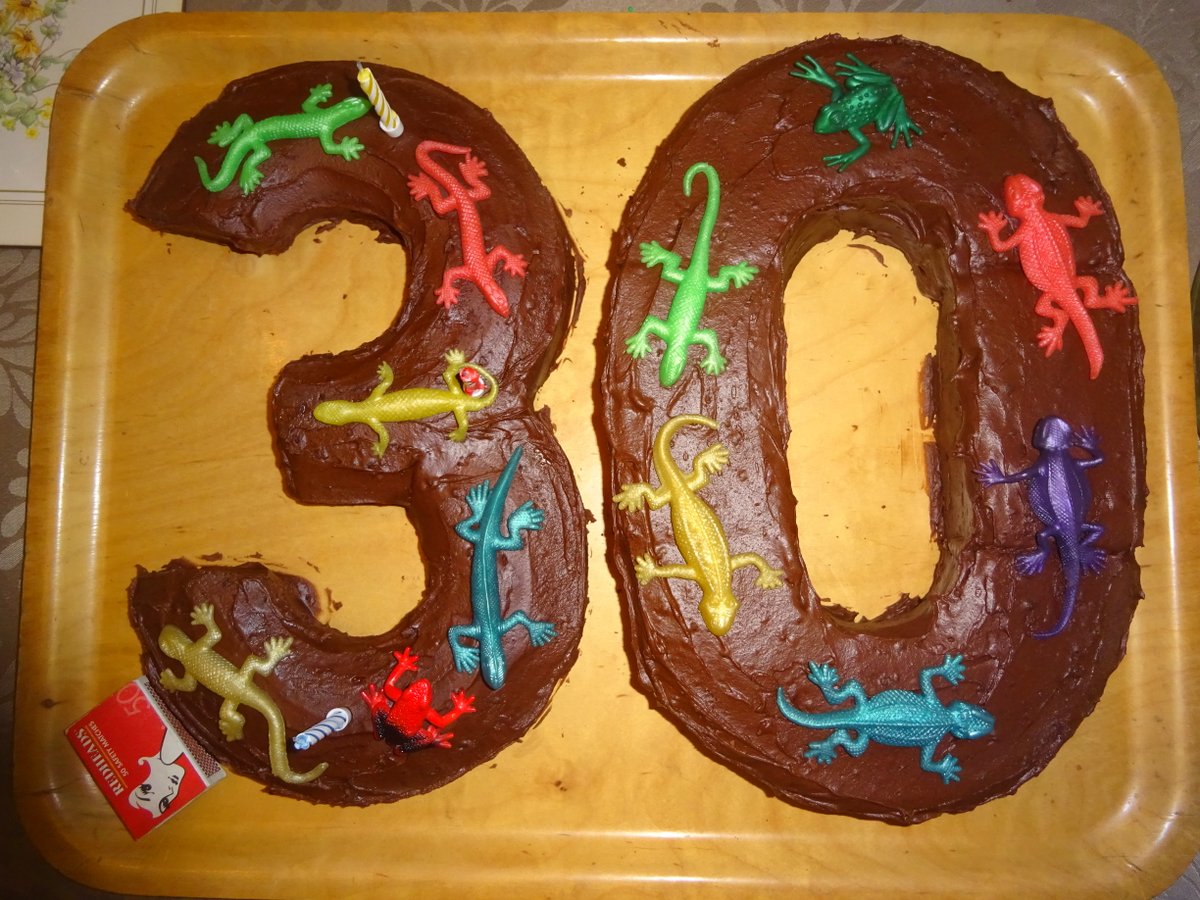
And in other circumstances reaching it might have felt significant - but it really wasn’t. Nothing much changed. As a child, I would have considered it old, but now I realise it’s not. I also would have expected that by this point I would be a responsible adult knowing all the answers. But no, that hasn’t come, and I no longer expect it to come. The world is too big and too changeable to know all the answers.
Perhaps a quote from The Lord of the Rings is appropriate here:
“Twenty-nine!” said the lad and whistled. “Why, you are quite old!”
(just for the record, this is from an author who considers 50 an eligible age for hobbits to go questing, and 90 the perfect age for a king to take his crown).
Though I did take the chance to visit Blue Lotus Water Gardens on my birthday:
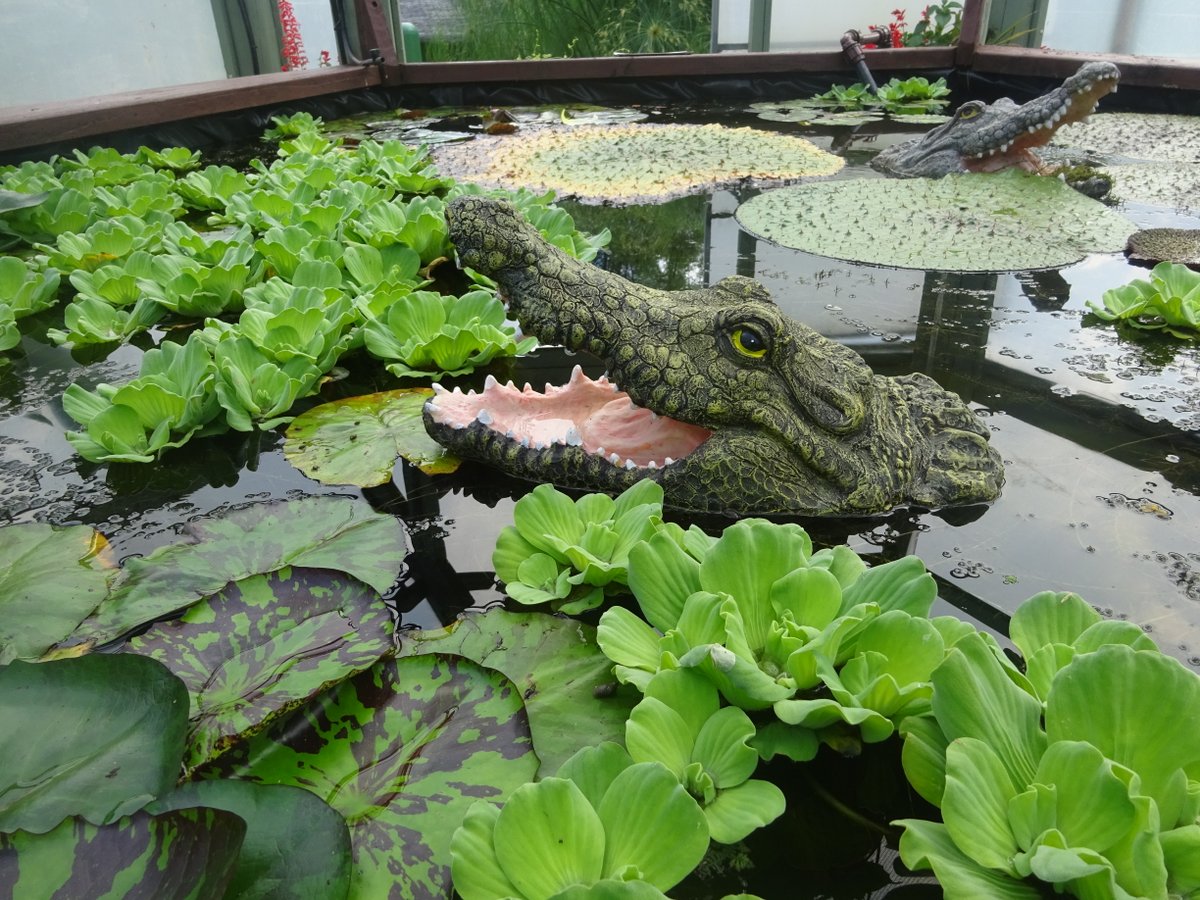
Travel
As in 2017, I stayed within Australia in 2018, though I did venture out of Victoria.
The most significant place I visited for the first time was Sydney. And yes, I was a stereotypical tourist: I admired Sydney Harbour. I saw the Opera House. I walked across the Harbour Bridge. I also took the chance to brush up on the city’s history, explore a few of its parks, and to visit relatives living there.
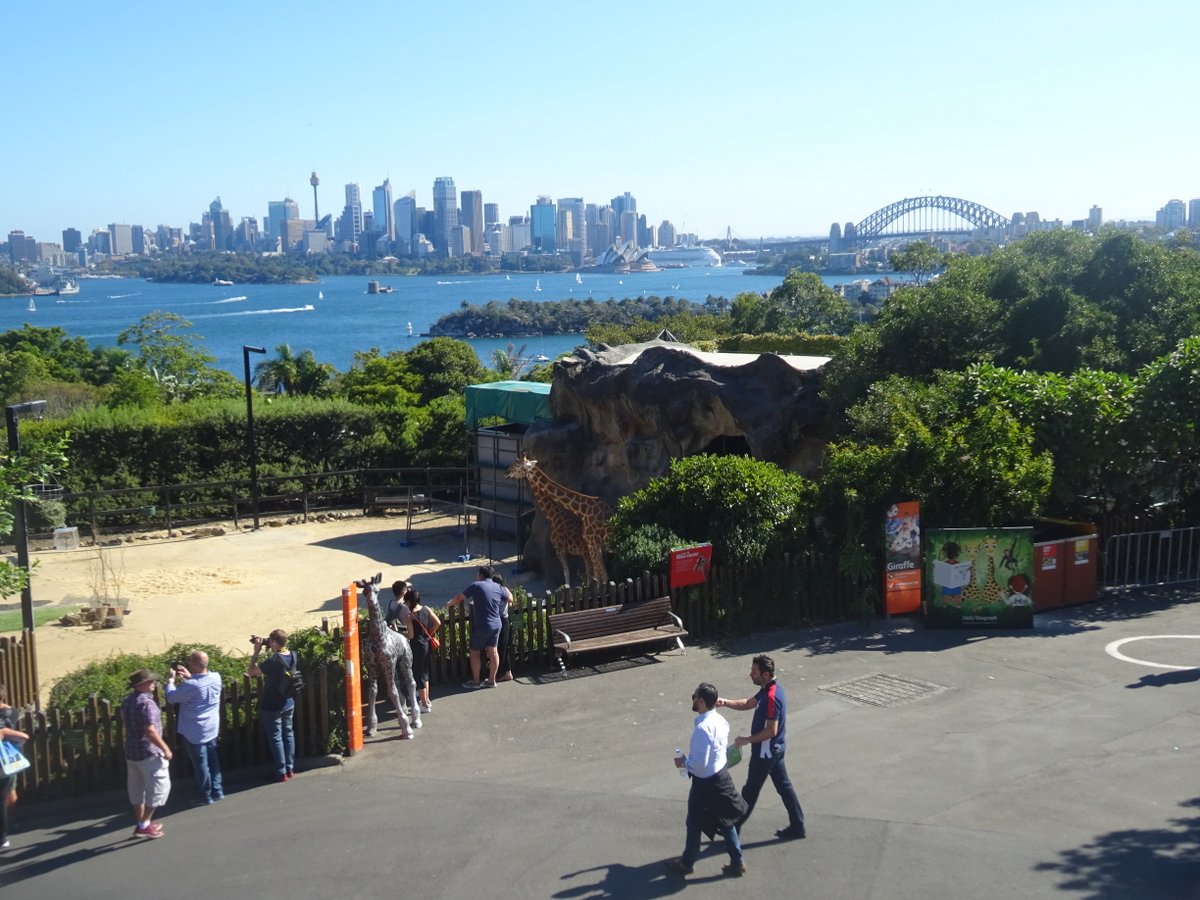
While there, I had experiences that were carefully planned, and experiences that were completely unexpected.
Take for example my trip to Taronga Zoo. I planned to visit the zoo by ferry, to take a hike afterward, and then to return by ferry. I did not plan to time it so the ferry would be passing Sydney Harbour Bridge just as the sun was setting behind it. But I wasn’t sorry to take advantage of it…
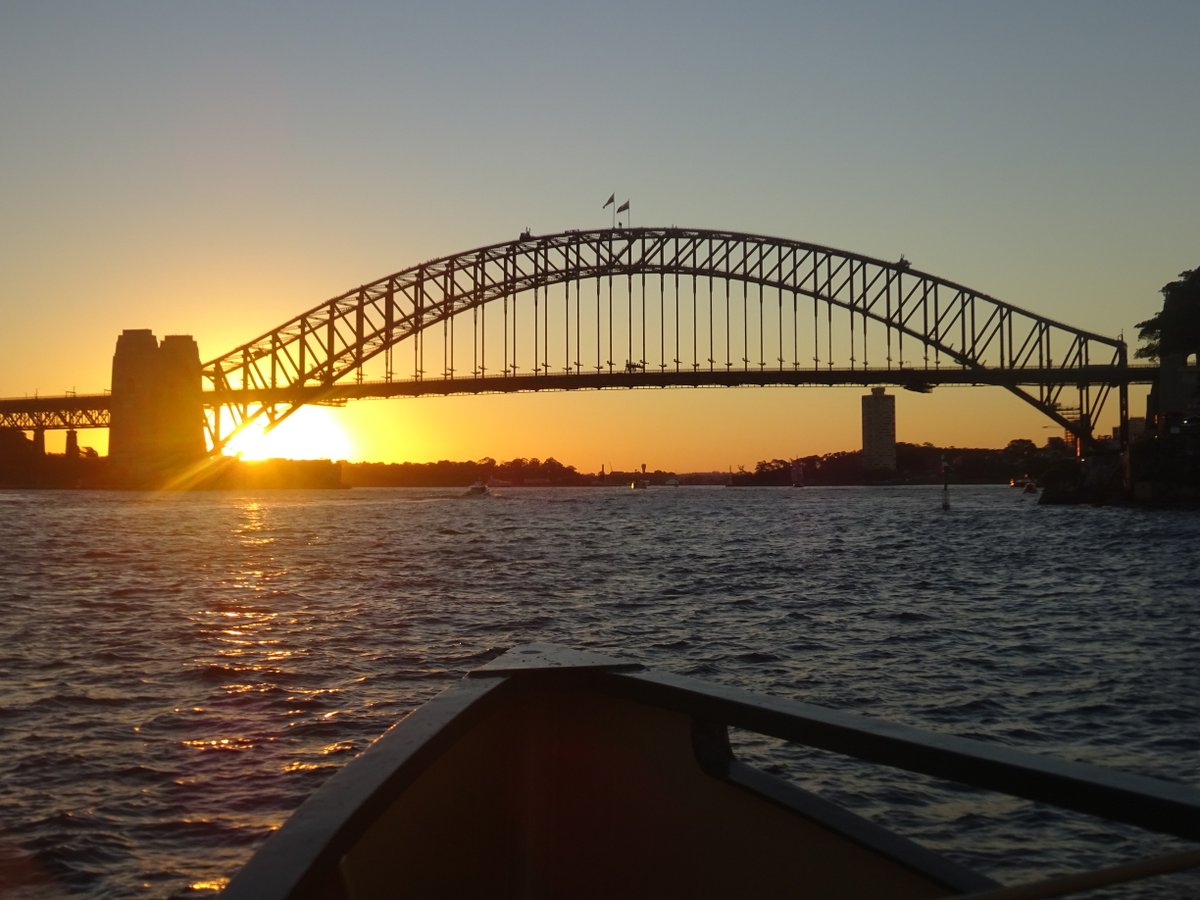
In some ways Sydney is more beautiful than Melbourne. In particular, I don’t know anywhere in Melbourne quite like Sydney Harbour. And this doesn’t bother me - I’m glad to have seen it, but I’m also fine with living in Melbourne where we have plenty of beauty of our own. It doesn’t have to be a competition.
I also found my way into South Australia, venturing across to Mount Gambier for its volcanic remains and sinkholes, and to Naracoorte for its historic and beautiful caves.
Accommodation
On my travels, I stayed in a few interesting places.
A converted train carriage next to Sydney Central station:
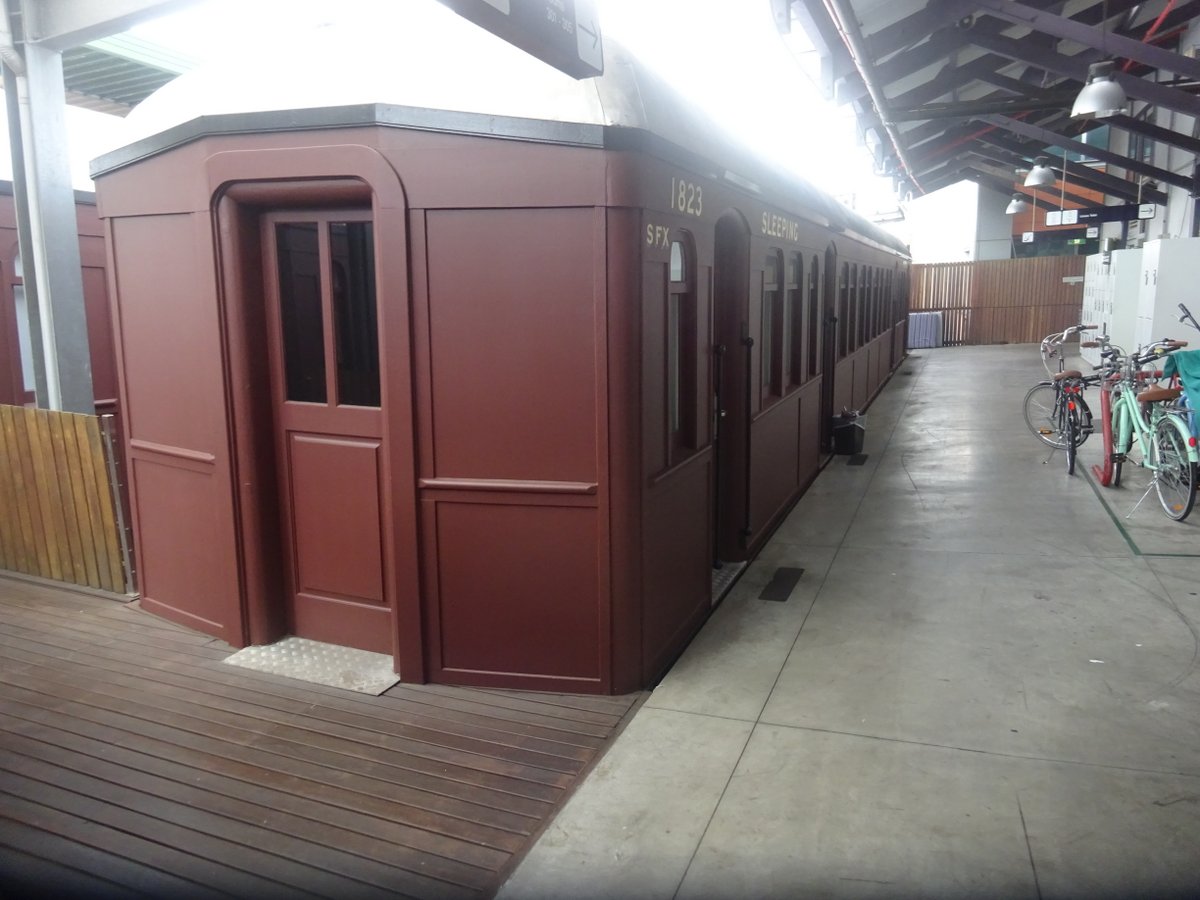
A former jail in Mt Gambier:
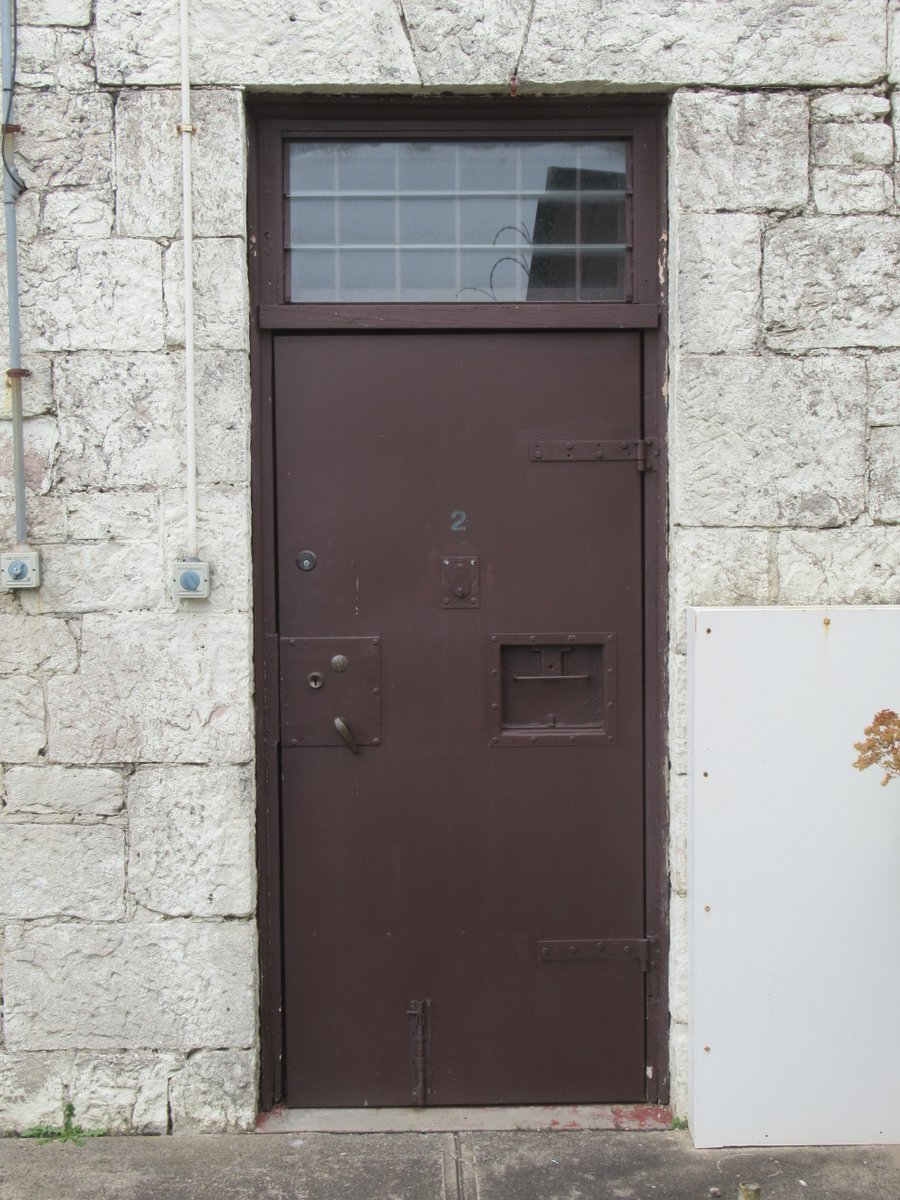
Camping next to a big river in Little Desert:
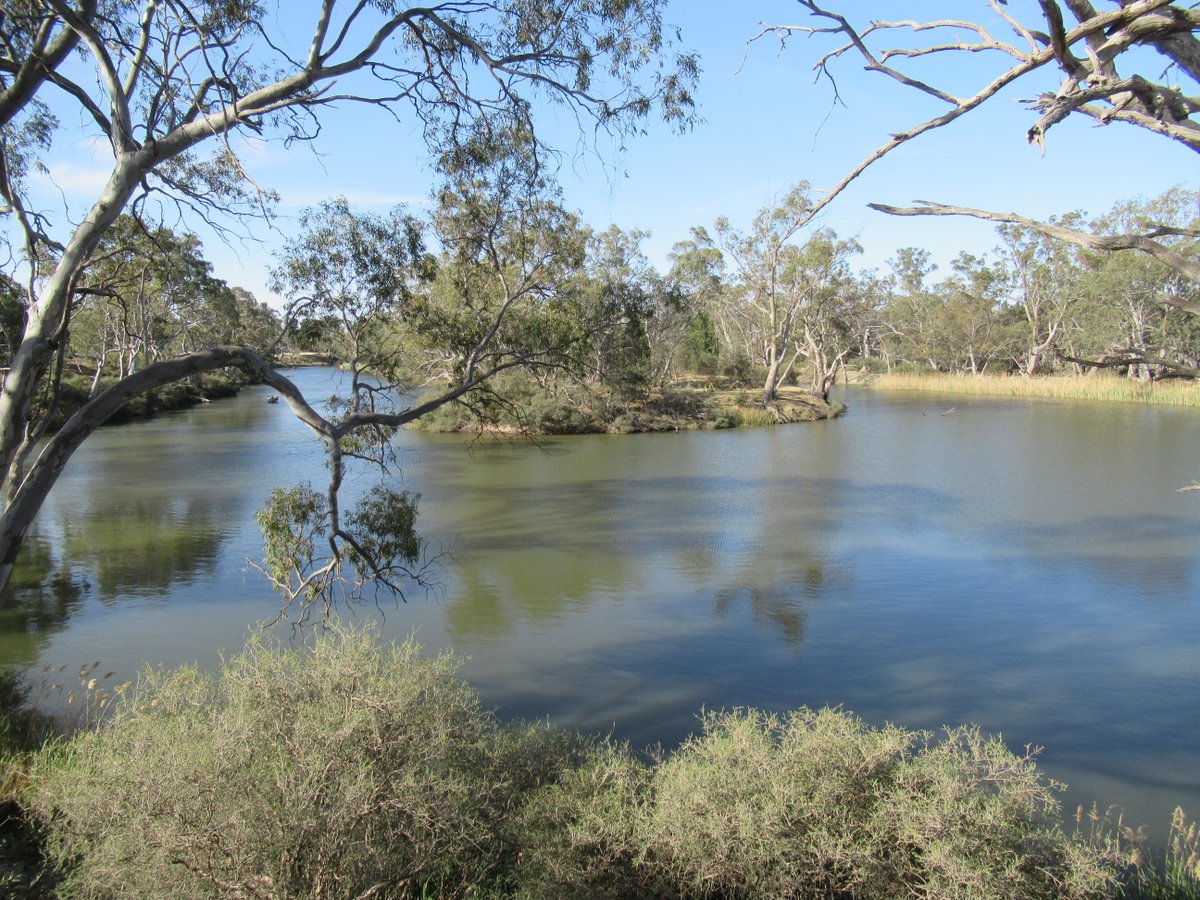
Online community
Apart from family time, much of my interaction with other people is through various online communities. But the one I have to particularly call out is Roll to Disbelieve. It is without doubt the community I was most significantly involved in in 2018 (it was already heading that way in 2017).
As a blog it is US skewed and focused on fundagelical Christianity - but it has commenters throughout the world (yes, including me) and from a variety of different backgrounds, and discussions can and do range far beyond religion.
There’s plenty of banter, there’s shared ceremonials and jargon, and it is a very supportive community (sharing joys and sorrows, and sometimes just providing a good place to rant). Sometimes it feels like it takes more hours than I really have to spare, but I learn and have fun while feeling part of it, and hopefully in my turn help others there.
In fact, one of my favourite posts for the year was an explicit discussion of community: Penguins, Grief, and Meaningful Community, in which many commenters (including me) took the opportunity to talk about the R2D community and about community generally (my comment).
I’m sure the community makes me more anti-religion than I used to be - some just from the general atmosphere, but a lot of it from the many examples given of religious abuse (due to the audience, mostly Christian). Which means I now want the Bible either completely destroyed or expurgated in a way that would have shocked me as a believer. It becomes increasingly clear to me that just about every negative verse in the Bible has been taken literally by someone, somewhere, with the result of hurting others.
I’m OK with becoming more anti-religion so long as my objections to religion are evidence-based, and so long as I’m still able to interact respectfully with religious people around me (including some of my co-workers, friends, and family). And no, I don’t expect all humanity’s problems to be solved if we somehow get rid of religion.
Back to community, though, what I’ve found is that good communities don’t just stop at their ostensible purpose, but go way beyond it. That is true of Christian communities: I’m pretty sure members of my former ecclesia didn’t call it “family” just because it had regular talks on the Bible and could bring us closer to God. And it’s also true of great secular communities, like Roll to Disbelieve and a couple of others I’ve been privileged to be a member of this year. Not only do interactions stray outside the “official” community topics, but the communities also facilitate individual members building personal relationships (whether by personal messages, emails, Facebook connections, even in-person meetings).
There are now quite a few people online that I’ve never met in person, but feel like I know better than many of my work colleagues who I see daily. And perhaps those people online also know me better than many of my work colleagues do.
And perhaps in an ideal world more of this community would be in Melbourne and able to meet in person. But maybe it wouldn’t make any difference to me: I know various people in Melbourne through online communities that I’ve never met in person, while there are also plenty of people I’ve known in real life in Melbourne who I haven’t met in person or online for a very long time.
Everyday hiking, revisited
In my review post for 2016, I wrote that I wanted to find the worthwhile places within 5km of my house that I had rarely or never visited. Then in late 2017, I wrote about the benefits I’d seen in what I called “everyday hiking”. Now, after a full 2018, I think the 5km mission is basically accomplished. And I know there are a number of places that I now visit frequently which I first discovered within the last year or two.
I’ve said it before, but the most notable park near me is the Dandenong Ranges. And to me it’s not just the walks but the opportunities they present. Because it’s right on my doorstep I can go for a long circuit walk (for example, visiting Mount Dandenong - a 28km circuit with 1km elevation change). I can stop off from work a station or two early and take one of many different routes over the hills to my house. Or I can just construct a circuit at random out of the network of inter-connected trails, hearing the birds and meeting the odd wallaby or echidna en route.
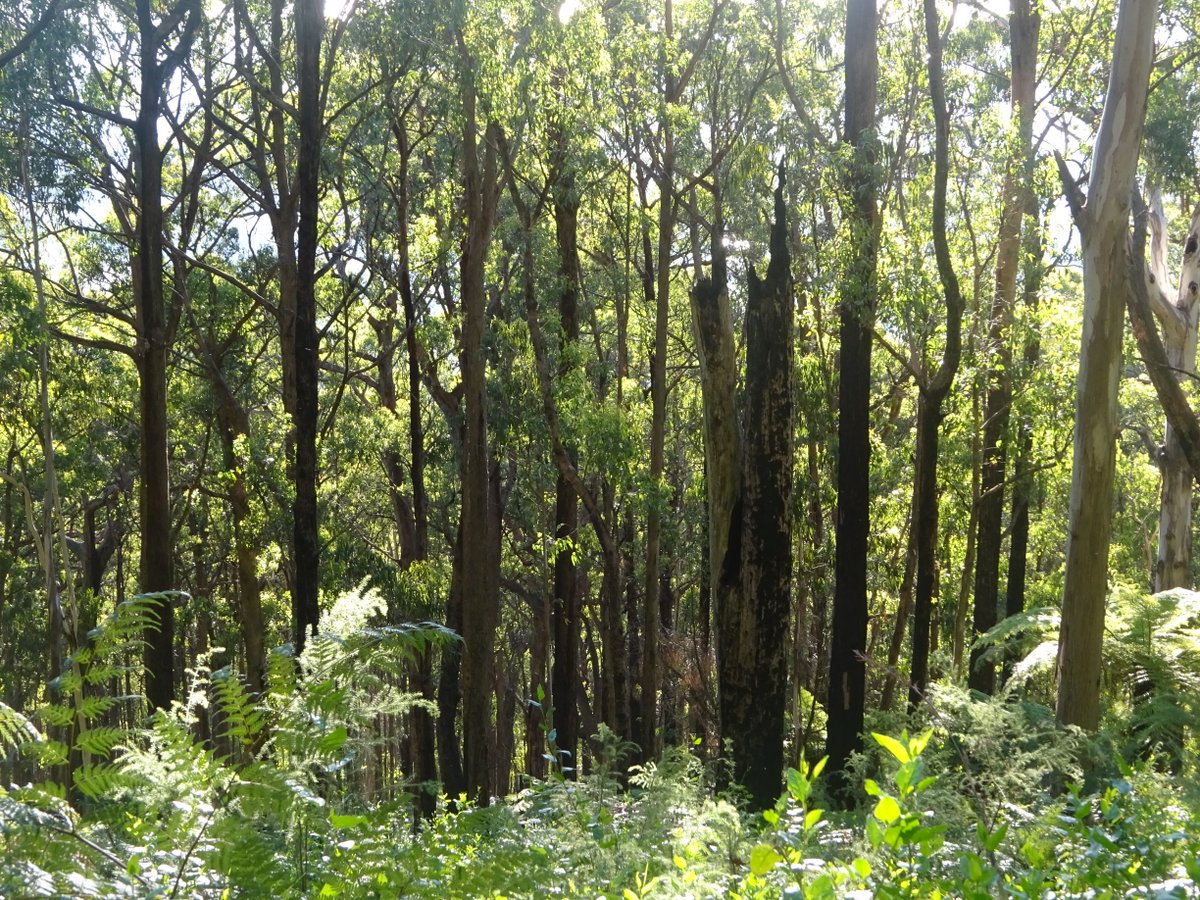
But it’s not just the actual national park: I can walk a couple of kilometres in almost any direction along relatively suburban streets and come to sweeping views of the flat-lands below. If it’s at night the flatlands are replaced by a glowing network of street lights.
Sometimes the important thing is just knowing that it is there. Whether or not I actually take advantage of it, I know I can take advantage of it when I need it.
And it’s not just home. At work I’m within striking distance of Yarra Bend National Park for the occasional late summer evening stroll. The CBD offers a variety of walks, with views ranging from impressive buildings and towering skyscrapers to harbour views to a number of beautiful parks. Plus it offers fantastic venues for music, the arts, sports, etc.
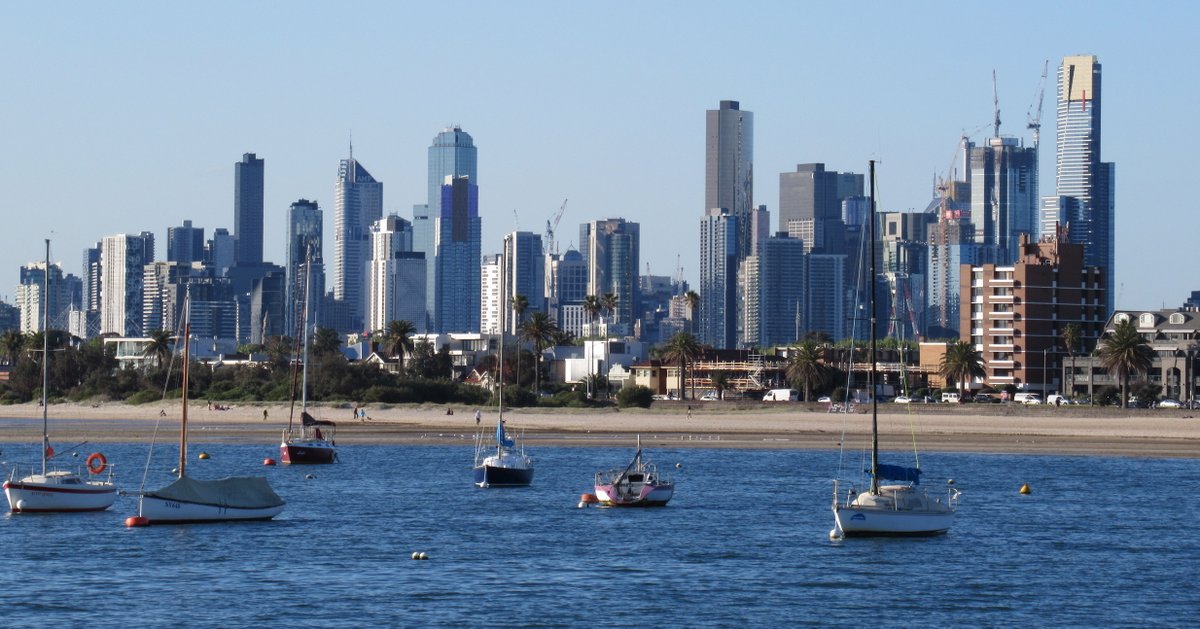
Beyond the 5km mark I’ve seen an increase in the number of places within 10km, 20km, or 50km that I’ve visited, though there remains plenty of room for improvement. And somehow it seems that I’m more comfortable pushing those boundaries because I know I’m comfortable within the boundaries. That means I only push them when I feel like it, rather than pushing them because I’m feeling trapped.
So in 2018 I was missing some of the impressive stats: I think I only got above 1km once (Mt St Leonard: 1,010m), and there were no overnight hikes and few unreasonably long hikes. But what I wasn’t missing was the satisfaction. Walking casually with a gentle breeze blowing, nice views, and no pressure is one of the best feelings ever. Sometimes it feels like hiking is the only place where I’m not constantly worrying that I’m not getting enough done or that I’m too distracted or that I’m not living up to my ideals. Time itself stops having as much meaning (so long as I’m not trying to beat the sunset…). And all that means I get a better perspective, seeing more of the positives and more of the big picture.
Basically, when I’m hiking life is much more likely to feel good. I don’t know whether it’s the best use of my time, but I do know that I value it far too much to give it up lightly.
Music and theatre
As in previous years, I attended a number of classical music concerts (nearly half of them free, I may add). The music ranged from Beethoven and Tchaikovsky to Westlake / Lior and a couple of World Premieres, with my favourites being Tchaikovsky’s 4th and 5th symphonies.
I even got my entire family along to Tchaikovsky’s fifth. That horn melody near the start of the second movement: Apparently Tchaikovsky wrote against a sketch of it in French “I love you, my love”. I defy anyone to listen to a live performance of it and not be deeply moved.
And while in the city I like Hamer Hall and the Town Hall, it’s hard to find a venue for live music as impressive as Parliament House (pity about the 40 minute wait to get through security screening…):
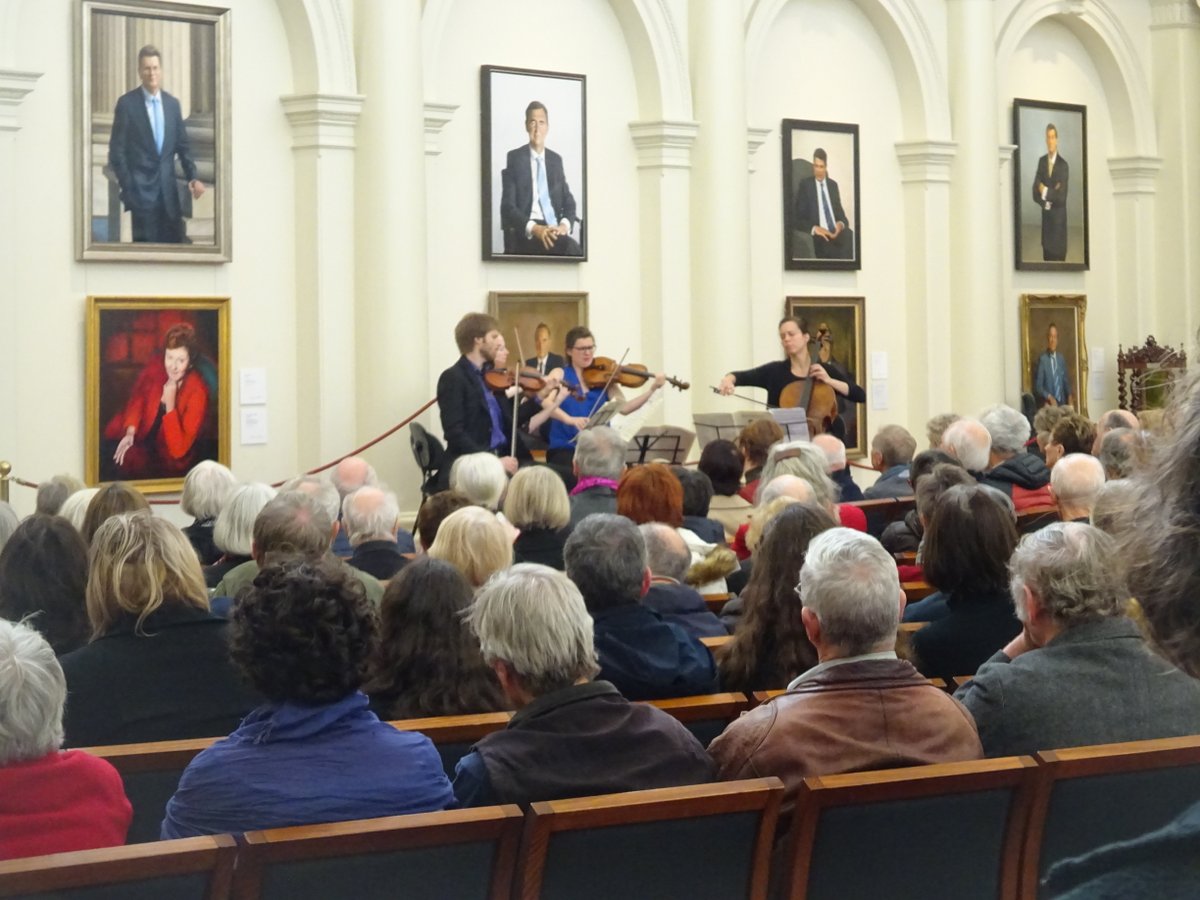
And finally, a piece I discovered this year that puts a smile on my face every time I hear it:
In the theatre world, I visited productions from Shakespeare to Twelve Angry Jurors to more recent pieces, my favourites being the Jekyll & Hyde musical and Shakespeare’s Henry V. And while it’s hard to look past the replica Popup Globe, perhaps my favourite venue was in the Dandenong Ranges with rain in the forecast:
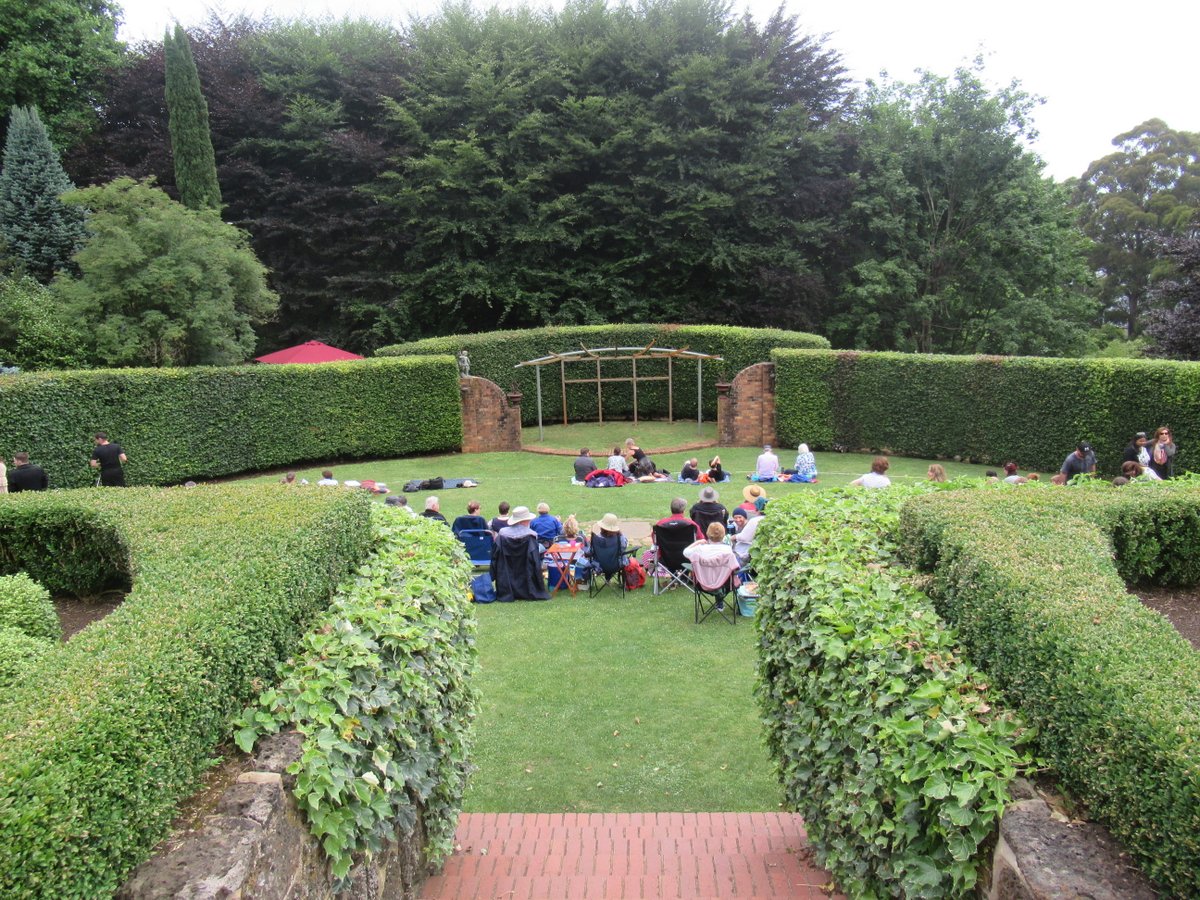
And my local theatre provides enjoyable performances within walking distance.
Blogging
My most popular post during the year was “Will you ever return to the Christadelphians?”. That pleased me, since it was also in my opinion the most important post I made in the year. I now find the post far too detailed, but it was important to me to show how big the change was.
When I first quit the decision was solely about whether or not the religion was true. Now, while that reason still applies, I also recognise that leaving religion began a complete re-imagining of my life that is still ongoing. There are so many different reasons to stay away from religion generally that anyone wanting to re-convert me should expect an uphill battle (and no, that is not an invitation).
Similarly, it was very satisfying in another post to reject the concept of an unbreakable vow made through indoctrination.
However, it did seem to be more of a struggle keeping the blog going in 2018. Most months saw only one post. This will be my 26th consecutive month with at least one post, and sometimes keeping up that streak was the main motivation for getting a post finished.
The fact that I spent six months writing solely about the role of Israel and Judaism suggests I got lost somewhere. It meant 37,000 words in 2018 to add to the 7,500 words already written on the topic in 2017. A lot of that was direct quotations, but even so it’s a lot of time and a lot of writing. And I still haven’t finished one of the posts on it I promised way back in July.
It was an interesting series, and the more I found, the less I could give it up until it was “done”. However, I think if I had known in advance it would take six months and carry me deep into areas I was inexpert in, I wouldn’t have started the series. There have been plenty of things over that time that I’ve wanted to write about, but have put on hold in an effort to just get the hostile takeover series done.
So in 2019 what I really want to do is get back to writing the blog posts that are fun to write. I’m sure there are some of these in the hundreds of drafts and ideas I have scattered all over the place, from tiny scraps to detailed posts that aren’t quite finished. But I also want to be able to forget that I have a queue of hundreds of once burning ideas and be free to write about the latest wild idea conceived on a hike, or about the latest book I’ve read, film I’ve seen, or popular culture item. The things that have made me laugh, and the things that have made me cry. Ideas both fascinating and disturbing. Some of my favourite blog posts from 2017 were written within weeks of having the idea, while some of my favourite blog post ideas now have been waiting attention for well over a year.
I do realise that at least 90% of my ideas never make it much beyond the idea stage, and that’s fine. And there will be themes I will want to focus on: I will probably want to spend more time completely over-thinking some aspects of my religious upbringing. And in the fiftieth anniversary year of the moon landing I’ll probably want to write more about space exploration and about how I see humanity’s place in the universe. But if I find myself stuck in another six month series I’ll know that I’ve failed somewhere.
Eating weeds
In March I went along to a weekend community day at a historic town hall and gallery near my workplace. As well as tours of the facility and general activities, there were several talks. One of them on edible weeds was interesting, and I liked some of the samples the speaker brought. So I bought a copy of his book (The Weed Forager’s Handbook: A Guide to Edible and Medicinal Weeds) and started hunting.
One of the benefits was that I started eating home-grown food, particularly dandelion and onion-weed. I’ve never tried to plant a vegetable garden, since I suspected it would fare badly. But this required little more than actually picking it (except for the hard work of delaying mowing the lawn another few weeks so I don’t disturb the latest good crop!).
I also looked for weeds further afield: chick-weed, wild brassica, sow thistle, oxalis, sticky weed, blackberry nightshade. Some were best for cooking, others were fine raw. Theoretically, many of them are considered very nutritious, but in practice I did it because it was a lot of fun. Onion weed, raw, was my favourite, but unfortunately I had to stop eating it because it can have a terrible after-taste hours later.
Perhaps my attention has waned: I haven’t searched out any of the summer weeds listed yet. But I continue to eat the ones I know and can still find.
Just to give an example of what this makes possible: One time I had some cauliflower rice lying around. So I harvested some home grown weeds (mostly sticky weed), cut them fine, added vegetables, stock, and a little cheese, cooked it, and waited to see what would happen.
In this case, the flavour was unusual and the texture exceedingly hairy (sticky weed should be cut very fine). But I was following my usual rule: So long as I’m the only one eating and I’m happy to eat it, it’s OK. Even recipes I would never try again can be fun to try just because they’re different.
I don’t wish to suggest this is my normal diet - most of my meals, while home-cooked, are very simple - but I like the potential to be able to do it.
History
In 2018 I ended up going to a number of sites that took me further back into the history of (European) Victoria and Australia than I had ever been. Obviously visiting Sydney for the first time was a big factor: It took me right back to the convict era I’d only read about. Those early days of Sydney before Melbourne had been founded to rival surpass it.
But even in Victoria I saw a number of sites from before Victoria became a separate colony:
-
On Churchill Island, a site that claimed to have housed the first European dwelling in Victoria (no longer standing).
-
At Sorrento, the site of the first (and only) convict settlement in Victoria. It was founded in 1803, in part to stop the French settling there (Matthew Flinders met a French survey ship in Bass Strait). However, after a year they decided the area wasn’t good enough, and moved on to found Hobart instead.
-
Point Gellibrand, which claimed to be “the most important site in the history of Victoria”. It was Victoria’s first permanent settlement and seaport (established 1835). Victoria’s first observatory was there for some years, and it still has a timeball tower there today.
I also visited Point Nepean, which has a historic quarantine station dating back to the 1850s. It also formed an important part of Melbourne’s defenses, helping guard the narrow entrance to the Bay at Port Phillip Heads.
While it has never been used to repel invaders, its main “claim to fame” is that it fired the first shot of the British Empire in WW1 (stopping a German ship attempting to run), and the first Australian shot of WW2 (forcing a Tasmanian ship to identify itself properly). It also housed lots of soldiers during WW2, including some women. Though no more shots needed firing, the job was difficult, and morale was low (one of the barracks was so terrible that the soldiers called it “Happy Valley”).
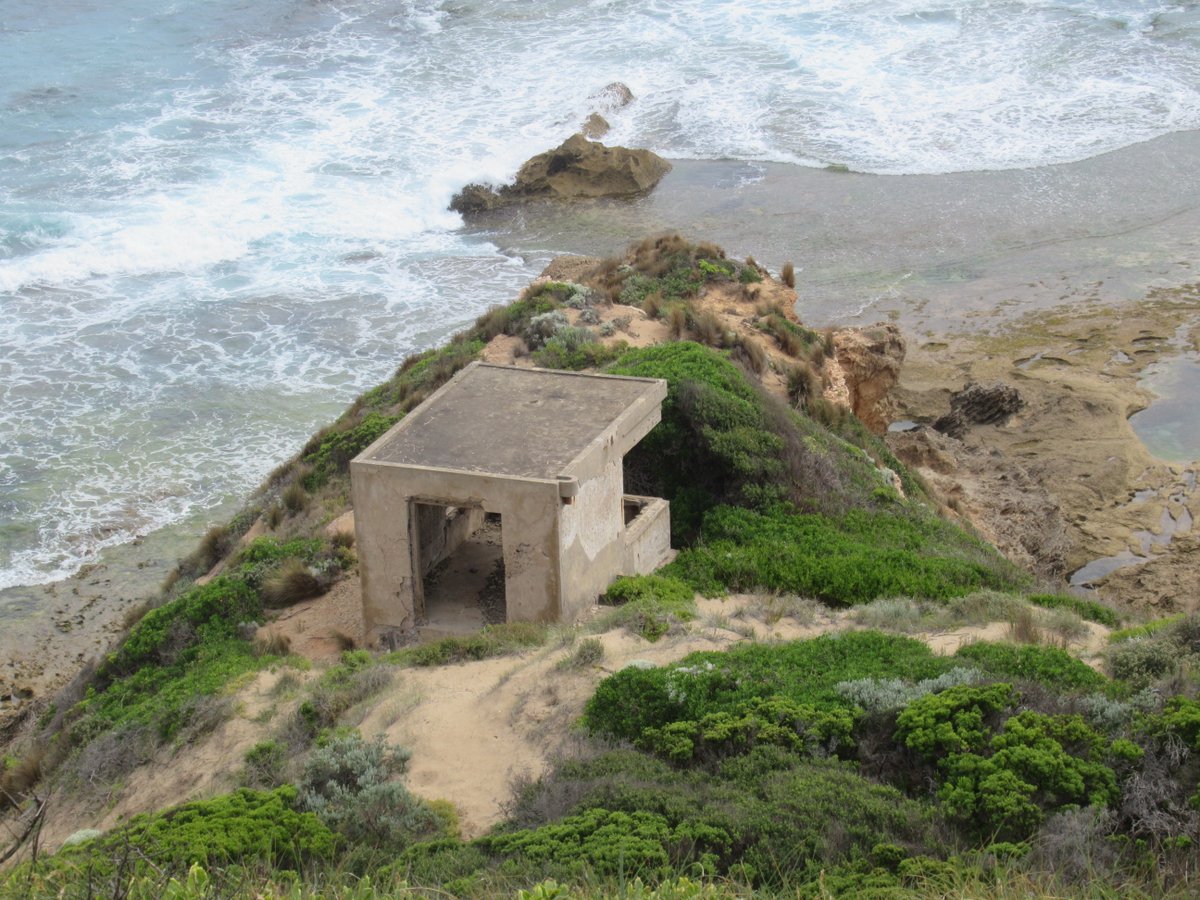
In more recent years, we had a Prime Minister disappear while swimming there in 1967. While there have been many conspiracy theories (including that he was taken by a Chinese submarine), the conditions that day were rough and it seems likely that he drowned.
Finally, going back further into history, I visited Naracoorte with its connections to the Australian megafauna of yesteryear. That included such interesting animals as Thylacaleo (the “marsupial lion”) - interesting so long as you’re not facing it in real life.
To get an idea of the sheer size of the deposits in the Victoria Fossil Cave, our guide reckoned since it was found in 1969 only about 5% of the remains had been excavated and examined. And it’s from these records that they first discovered Thylacaleo had an opposable thumb (now shown prominently in just about every picture of it). As a bonus the cave also has beautiful stalactites and stalagmites.
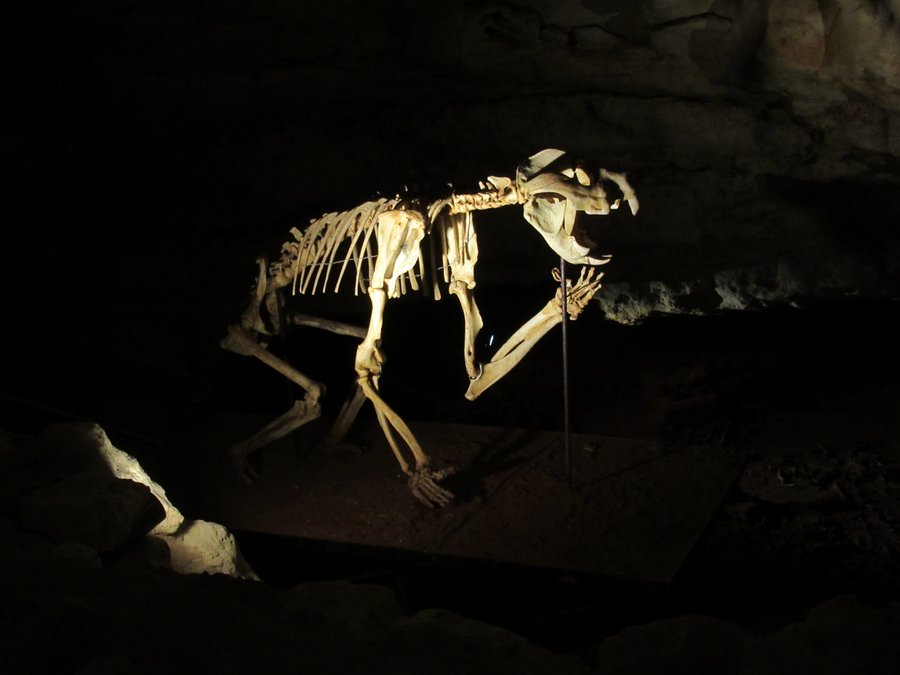
Incidentally, I also have Australia Post’s Megafauna first day cover and Perth Mint’s Thylacaleo and Procoptodon coins. I think it’s a cool part of our history.
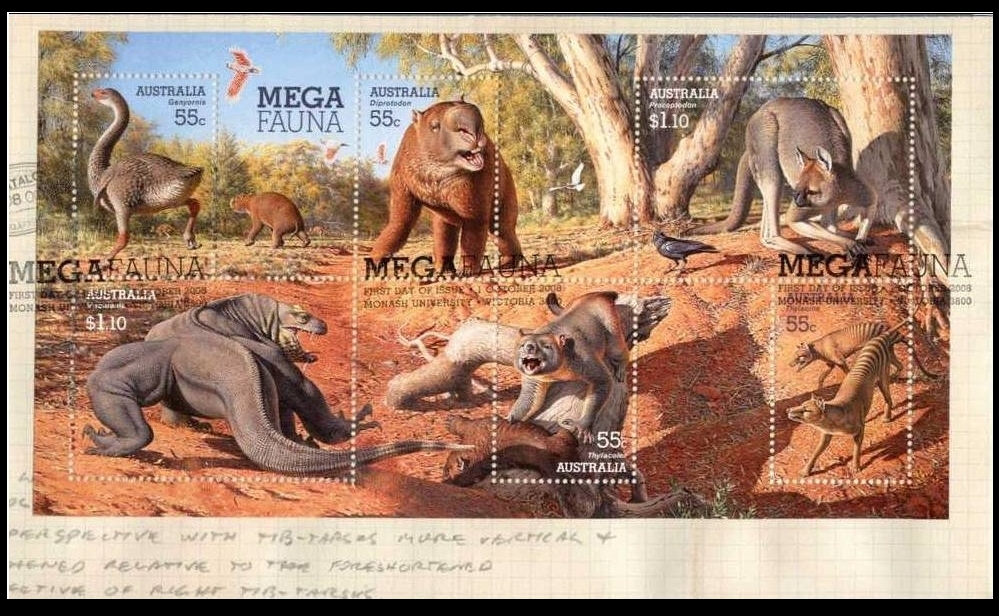
Museum membership
When I was a Uni student I loved visiting Melbourne Museum during exam time - it was free for students, and most of our exams were in the neighbouring Royal Exhibition Building. However, in the years after finishing Uni, I almost never got round to visiting it - it was all the way in to the city, my weekends were often filled with religion, and I felt lazy the rest of the time.
I thought that trying membership for a year might encourage me to visit more, on a “use it or lose it” basis. It would also allow me to go through exhibits at my own pace (usually pretty slow) rather than feeling I needed to “see” the entire museum in a single day. And so I did. I particularly enjoyed the section on 600 million years of Victorian geology and evolution - the kind of section YEC religious me would have dismissed instantly in Uni.
I also visited their other two museums in Melbourne (Immigration Museum and Scienceworks), and a partner museum in Sydney. In particular, the Immigration Museum had a new exhibition on post-WW2 British migrants (no longer on display), which was an important part of my family background.
So for a while it was a qualified success. Then they convinced me that renewing the membership would support research and knowledge over ignorance (plus I enjoyed visiting…). Unfortunately, once I decided I would renew it I stopped feeling the urgency to visit.
Yes, that was predictable. And I haven’t (yet) returned to any of the museums since renewing the membership. But I will return again in 2019. Honest!
Talks
Following on from 2017, I attended a number of interesting talks in 2018. In particular, talks as part of Melbourne Knowledge Week, Melbourne Science Week, and Melbourne Rare Book Week.
Obviously the weed talk mentioned above had the greatest impact on my day-to-day life. But the talk I enjoyed most was on anti-microbial resistance, at my alma mater and led by Sally Davies, the Chief Medical Officer of the UK. It was thorough, informative and fascinating. She didn’t just stop with the medical side, but also talked about real world impacts: economic and societal impacts, incentive structures which encourage or prevent anti-microbial resistance, and experiences navigating the United Nations hierarchy and national politics.
Plenty of technical details, but I as a lay-person was able to follow it readily (I was probably one of few there who wasn’t a specialist in some area related to the talk). And what’s more, this was her sixth talk for the day after arriving from the UK that morning. I was seriously in awe at this.
More hiking stories
As above, hiking has been an important part of my year. I’ve been out most weekends and on all my holidays, and in the process have picked up some interesting stories and pictures. So what did I do?
I walked the entire extended trail from Sassafras to Gembrook (though not all in one hike…)
I revisited a number of volcanic areas in Western Victoria and South Australia, including lava caves in Budj Bim and scenic lakes and sinkholes in Mount Gambier. But for me Tower Hill stole the show, with its several crater lakes and views across to the ocean.
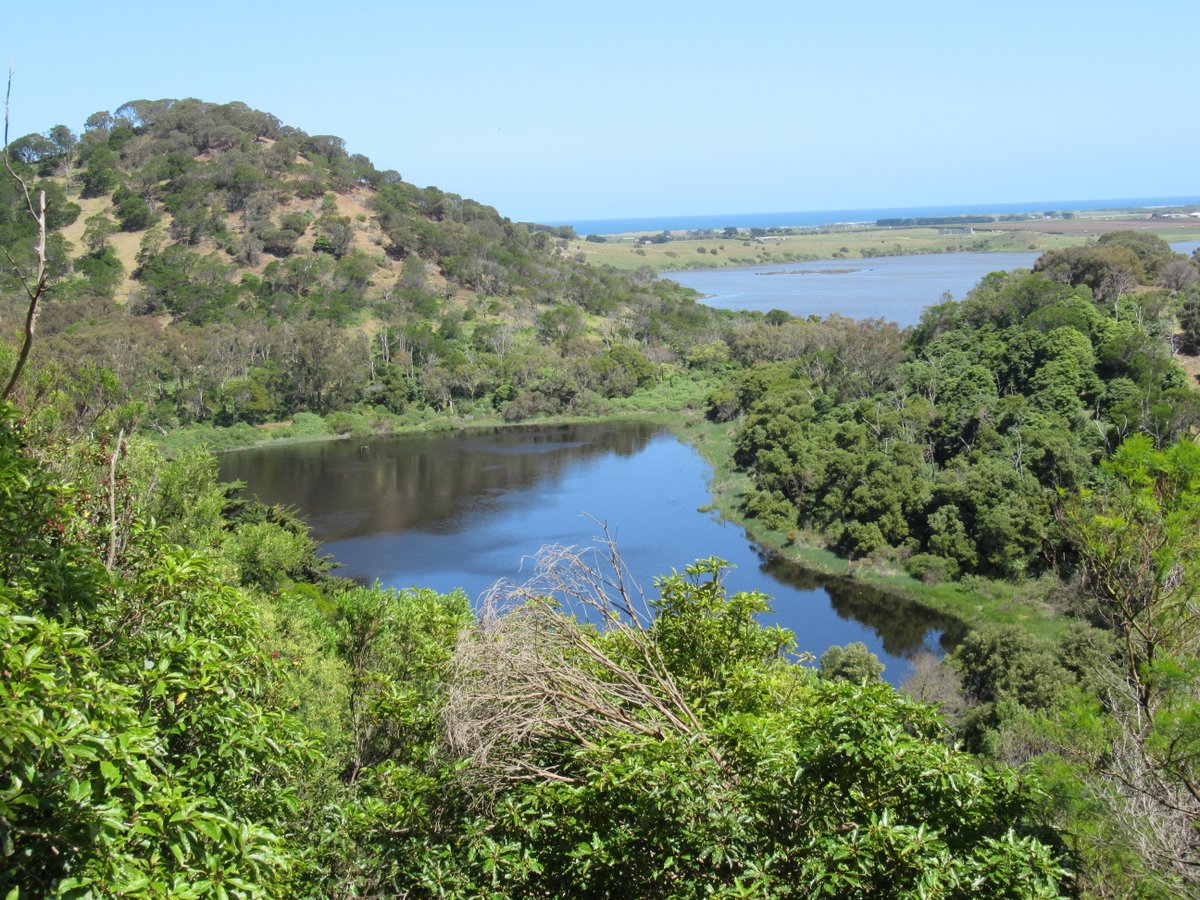
As well as revisiting the Grampians, I also dropped in on Arapiles and Little Desert, then decided I’d driven past Langi Ghiran too many times without stopping and climbed it. The final ascent is difficult and largely uncharted, but it has lovely views from several points on the way and up top. You can also visit a historic reservoir and follow a historic water race.
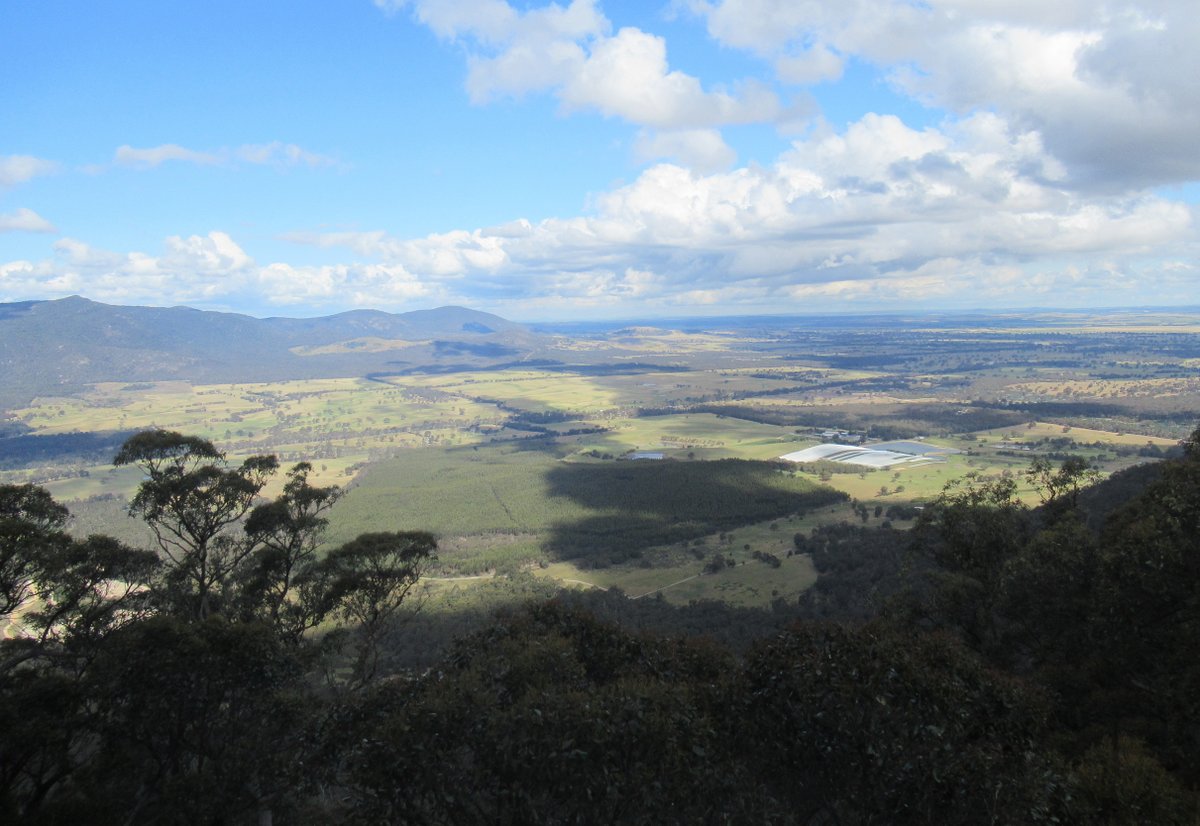
On the perennial debate of which is better, the beach or the mountains, I’ve perhaps found myself drawn more towards the beach this year. Though for me that means hiking, not swimming or surfing. It means cliff-top walks, looking out over beautiful views or down on crashing waves, or just walking along a beach in the evening and hearing the waves roll in.
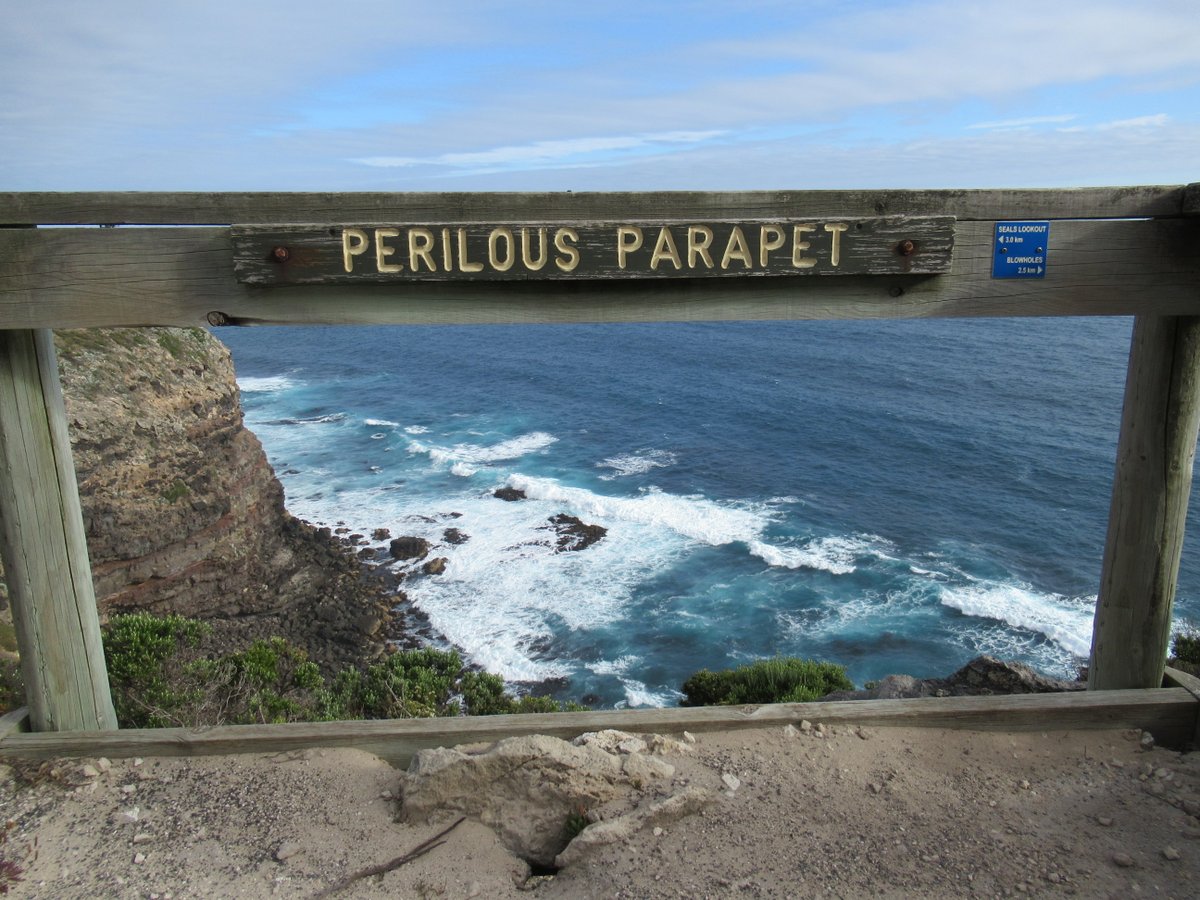
One unusual thing I saw in autumn in one of my favourite Dandenong Ranges gardens was a scaffold:
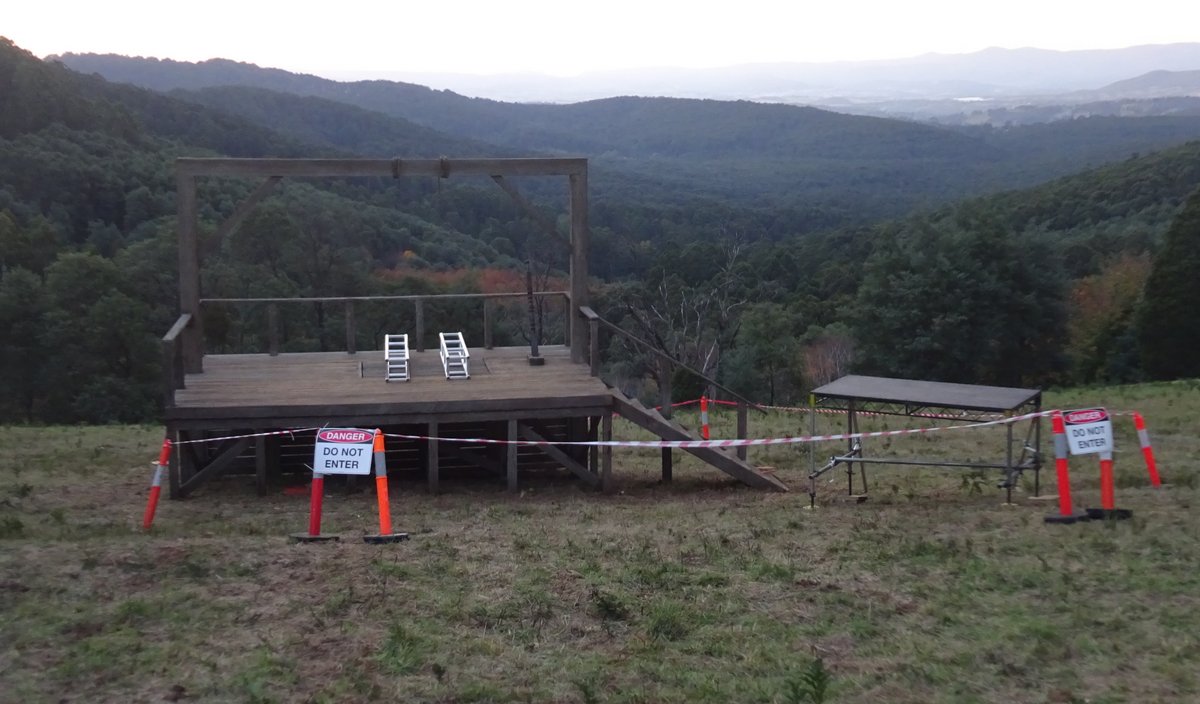
It was clearly for a film: While there was no filming actually going on while I was there, there were plenty of related vehicles in the car park, and the filming group seemed to be from Ireland. I heard a suggestion that it was a Ned Kelly film. I wasn’t able to confirm this, but it makes some amount of sense. And given the Irish connections I’m guessing such a film would probably be pro Ned Kelly?
In Autumn I saw lots of coloured leaves:
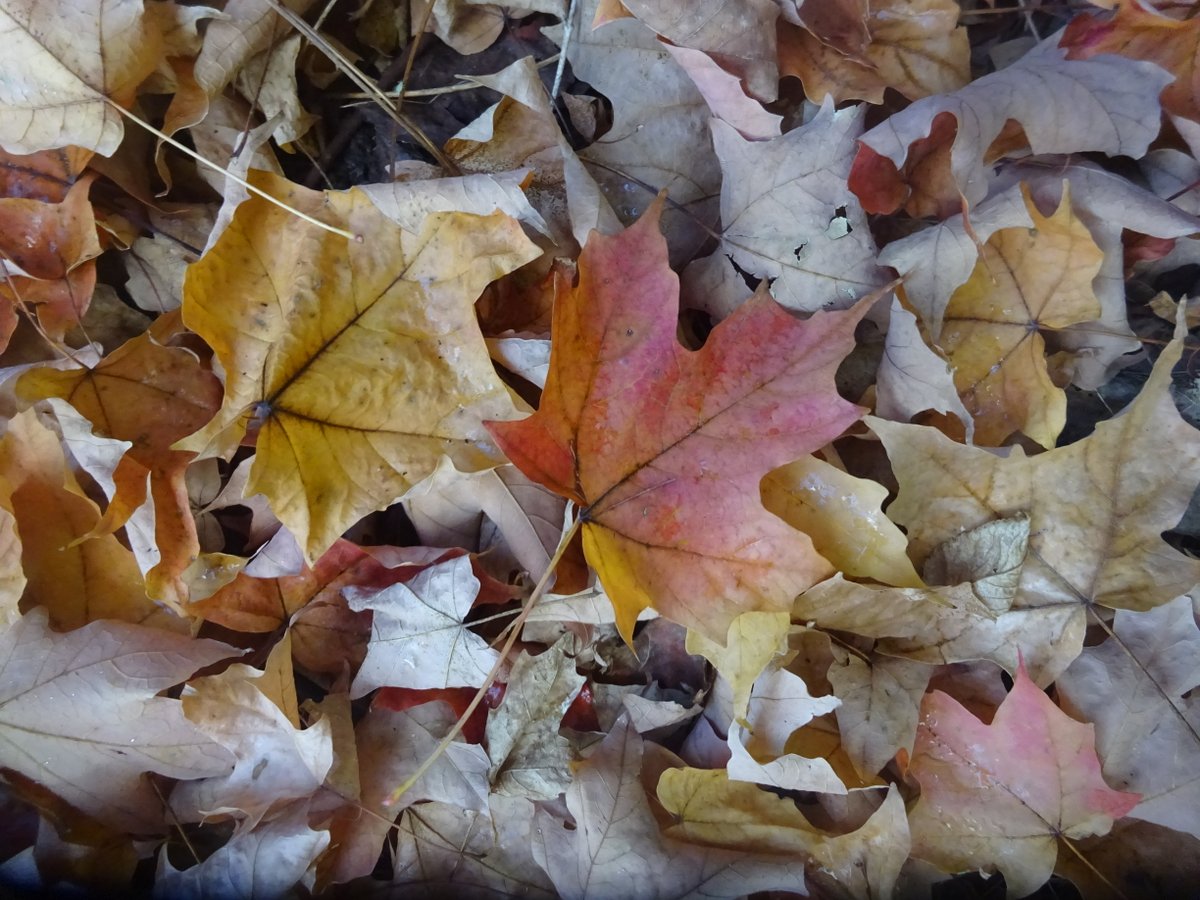
While Spring saw lots of colourful flowers:
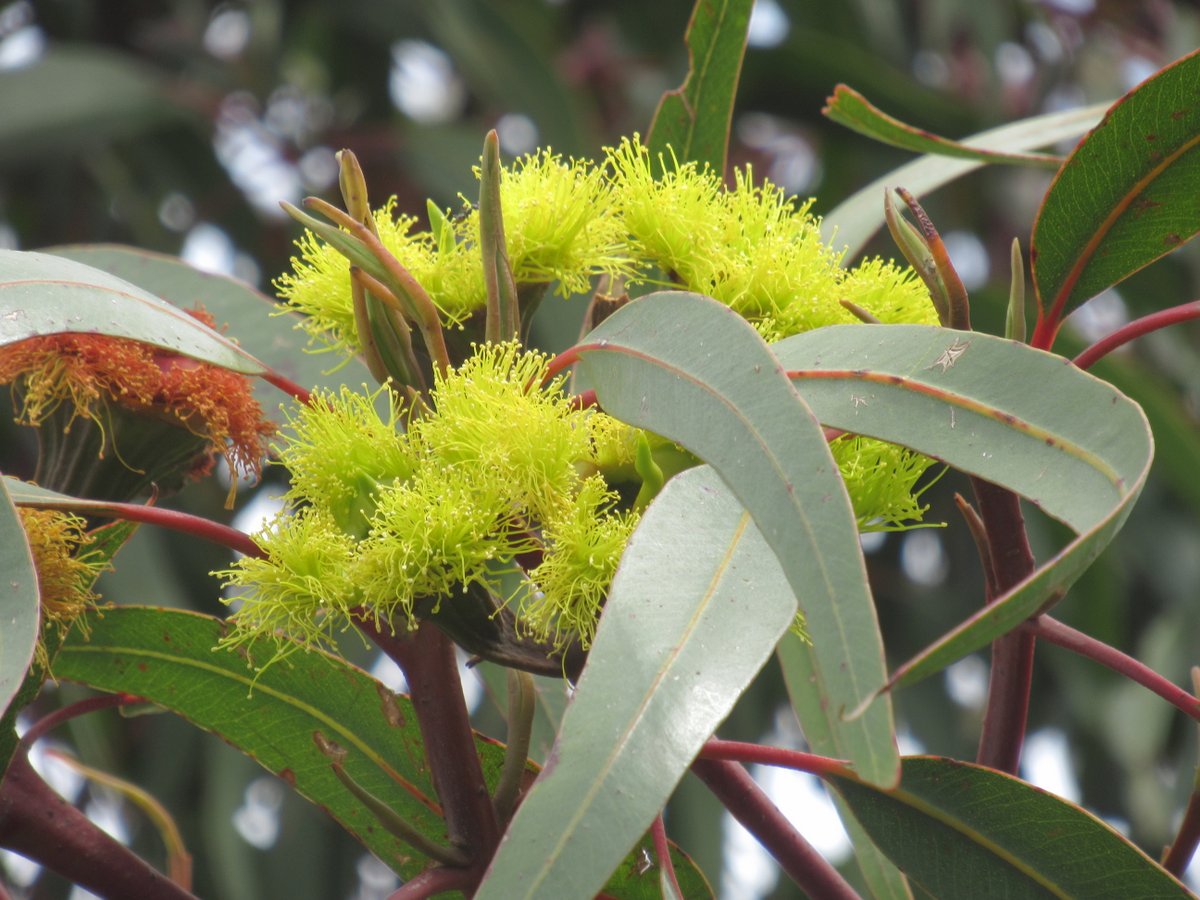
And finally for a couple of night hikes: One of the best things about going out into the country is the opportunity to really see the stars when the night is clear and the moon is away.
While travelling Western Victoria I got to compare two different starry views: One at Port Fairy, walking along the beach with the constant sound of waves coming in, and the other at Little Desert walking near the Wimmera River with the constant sound of the wind through the trees. It was hard to know which was better, but both times it was just incredibly difficult tearing myself away from it and going back to sleep (one I got back at midnight, the other 1AM). Basically, starry skies are awesome.
Other
I visited my old Adventist high school for an alumni event (first time in many years). A few too many references to God (which I expected), but it was generally fun and I managed to fit in to such an extent that apparently no-one noticed I’d gone apostate. And given how long it is since I left school, it was surprising how many teachers were there that I knew.
At winter solstice I went to the Belgrave Lantern Parade, then a week later to Melbourne’s Firelight Festival at Docklands.
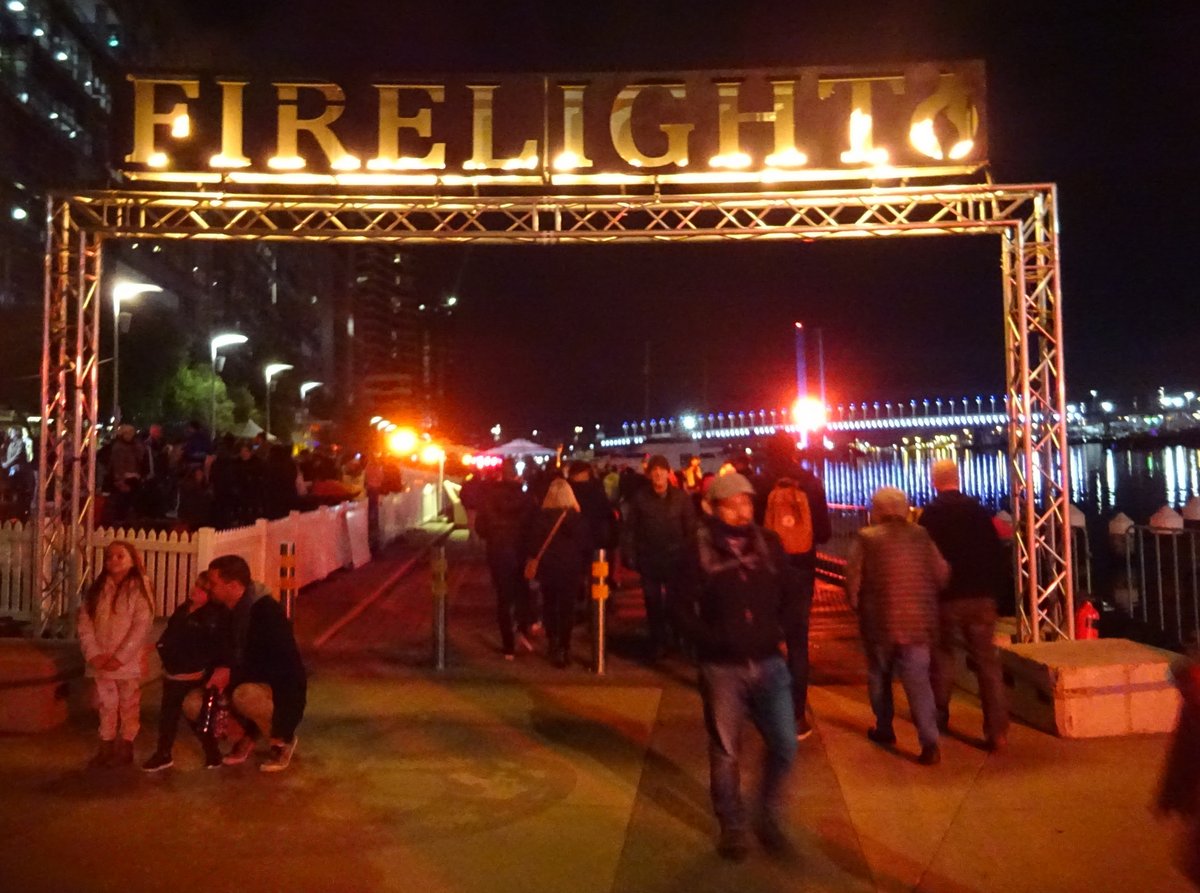
Given I was writing about Judaism, it seemed appropriate to visit a couple of synagogues during OpenHouses Melbourne. Both were beautiful buildings, and it was interesting to see how different their customs are from the straw-man Judaism we were taught from the Old Testament.
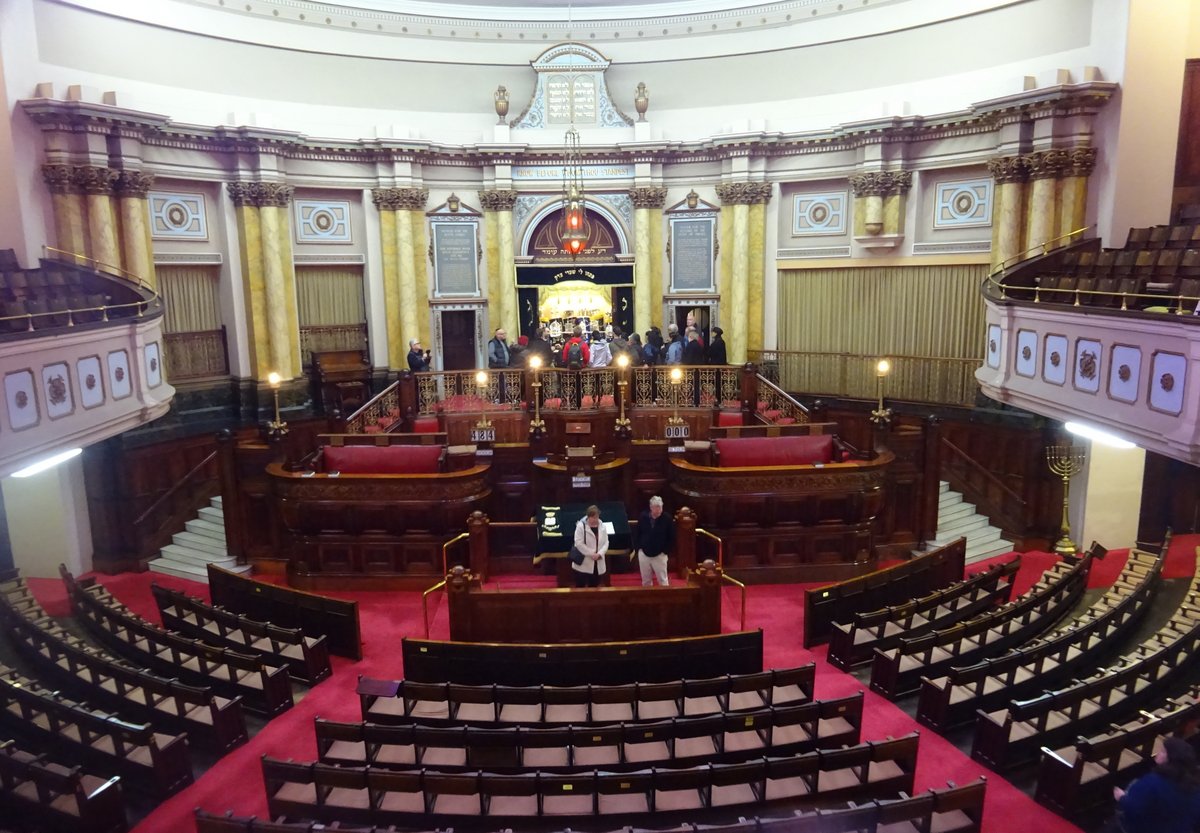
Them echidnas again
The last couple of “year in review” posts I’ve talked about meeting echidnas, so I had to keep up the trend:
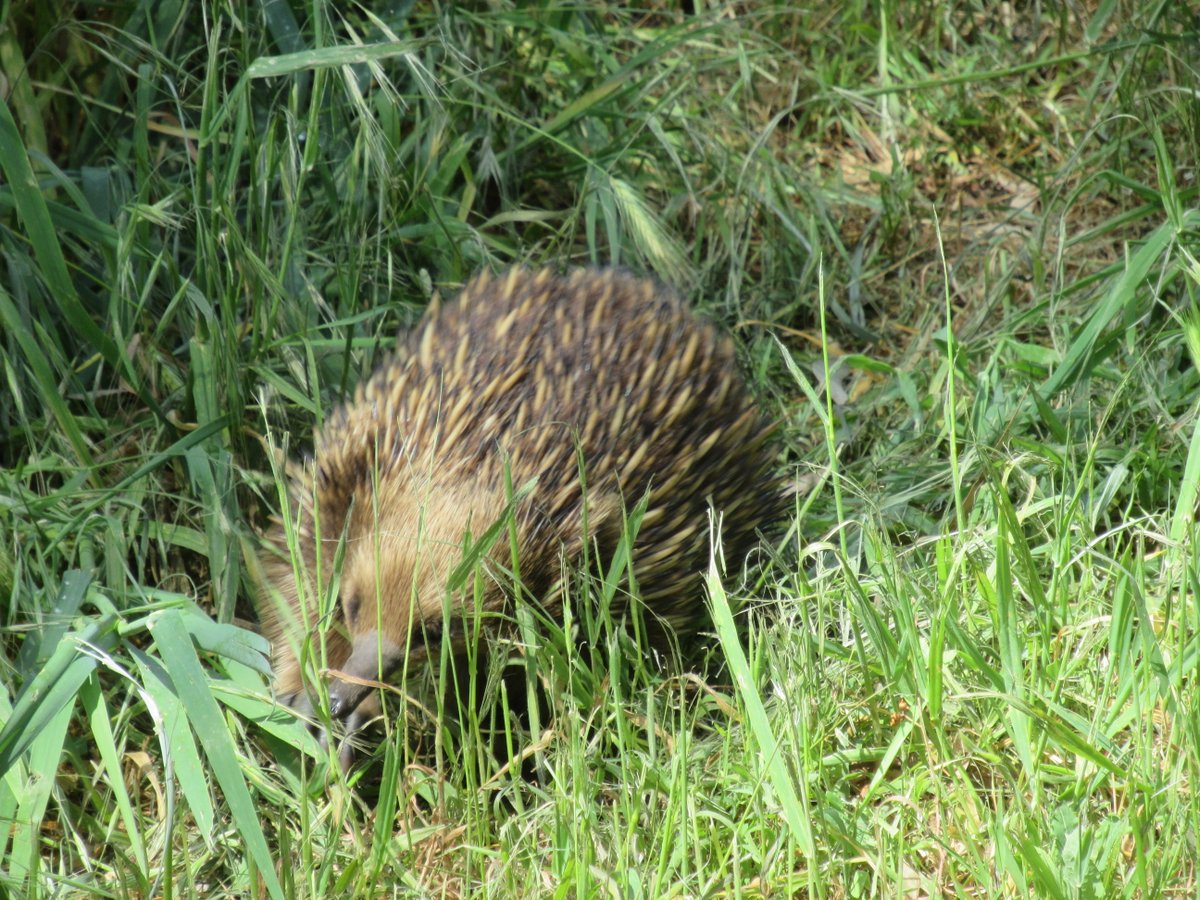
It seemed that in 2018 I just kept seeing them, not just in the Dandenong Ranges but at places like Cardinia Reservoir, Yarra Ranges, Sugarloaf Reservoir, Point Nepean, and the Grampians - even as far afield as Mount Gambier and Naracoorte and as close as suburban Ferntree Gully. In December I saw one just about every weekend.
I also saw a number of other Australian animals over the year which I intend to write about. Given it’s four weeks into 2019 I feel I’ve used up my 2018 review spirit, but hopefully I’ll be able to get back to these animals in the not-too-distant future.
What’s next
Ever since I found myself admiring the Swiss Alps on a quick break from a UK trip, I’ve been wanting to visit New Zealand’s snow-capped peaks for a neighbourly comparison. Well, it turns out that it’s finally organised and 2019 is the year.
Other than that, I’m sure plenty of interesting things will happen in 2019, but I imagine they will continue the same trends: work, hiking, online community, music and theatre, blogging, seeking out knowledge. And maybe there’ll be an unexpected plot twist or two. Tune in early 2020 for the next exciting episode.